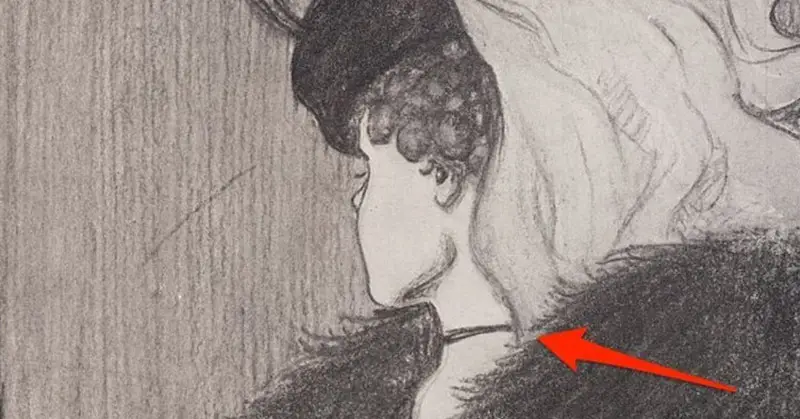There are many different famous optical illusions that have stumped people for decades- the Impossible Trident, the Cafe Wall Illusion, and the Impossible Elephant are just a few examples of how easily your eyes can be tricked.
One of the most famous of these illusions is “My Wife and Mother-in-Law”, also known as the Boring Figure, which has been making people look twice (or three or four times) since 1915 [1]. The famous brain teaser was created by British Cartoonist William Elly Hill, and includes two images in one. Depending on the way you look at it, you see a young woman with her face turned away from you, or you see the profile of an old woman.
A study conducted a couple of years ago in Australia used the image as an example of how age-bias affects subconscious face perception.

Image Credit: Wikimedia Commons
Your Age Affect What You See In This Famous Optical Illusion
The 2018 study was conducted by researchers at Flinders University in Australia. Since you can only see one of the figures at a time, the researchers concluded that which image you see first depends on your age [2].
The participants in the study, which included 242 males and 141 females (393 participants in total), ranged in age from 18 to 68, with a median age of 32. They were shown the image for half a second, then were asked the gender and the age of the person they saw [2].
In short, the researchers found that a younger person will see the younger woman first, and older people will see the older woman first [3].
Not only was a younger person more likely to see the younger woman first, but they tended to guess the age of the woman in the image to be younger as well. On average, younger participants guessed the age of the woman to be 6.3 years younger than the older participants [3].
What Does this Mean?
The consistency between the age of the participant and the perceived age of the woman in the image demonstrated what psychologists call “own-age bias” in face recognition. Basically, this means that younger people recognize younger people’s faces more accurately than older people, and older people recognize older people’s faces more accurately than younger people [4].
According to the researchers, younger people are more significantly affected by own-age bias than those who are older [3]. Basically, we are better at recognizing people who are within our own age group.
An adult’s ability to recognize a face is shaped by experience. Younger people, who have less life experience, not only recognize faces of their own age more accurately but also faces of people from the same race.
This can be explained by differences in the way in-group and out-group faces are processed. In-groups faces are processed at an individual level, while out-group faces are processed at the categorical level, making it harder to recognize them at an individual level [5].
All of this offers an explanation as to why a child thinks their sixty-year-old grandmother “must be a hundred”, or why someone who has not had significant exposure to people of a different culture may have a harder time differentiating between individuals of that culture.
Your Experience Shapes Your Reality
All of this is to say that your experience can have a significant impact on your initial interpretation of an image at a subconscious level. The more people you meet and interact with, the better you will become at differentiating between faces of people from different age groups, cultures, and even genders.
This study pointed out, however, that even older adults still had an easier time seeing the older face, which shows that even with more life experience and exposure to different people, you’re still likely going to have an easier time recognizing faces that are similar to yours.
Keep Reading: The First Thing You See in These 10 Illusions May Reveal a Lot About Your Inner Mind
Sources
- “What You See in This Classic Optical Illusion May Say a Lot About Your Age, Study Finds.” Womans World. Jaclyn Anglis. September 20, 2018.
- “A scientific study claims that your age affects how you see this famous optical illusion.” Insider. Gabbi Shaw. June 29, 2020.
- “Perception of an ambiguous figure is affected by own-age social biases.” Nature. Michael E. R. Nicholls, et al. August 23, 2018.
- “The own-age face recognition bias in children and adults.” PubMed. Peter J Hills, Michael B Lewis. January 2011.
- “Attending to identity cues reduces the own-age but not the own-race recognition advantage.” Science Direct. Valentina Proietti, et al. April 2019.

